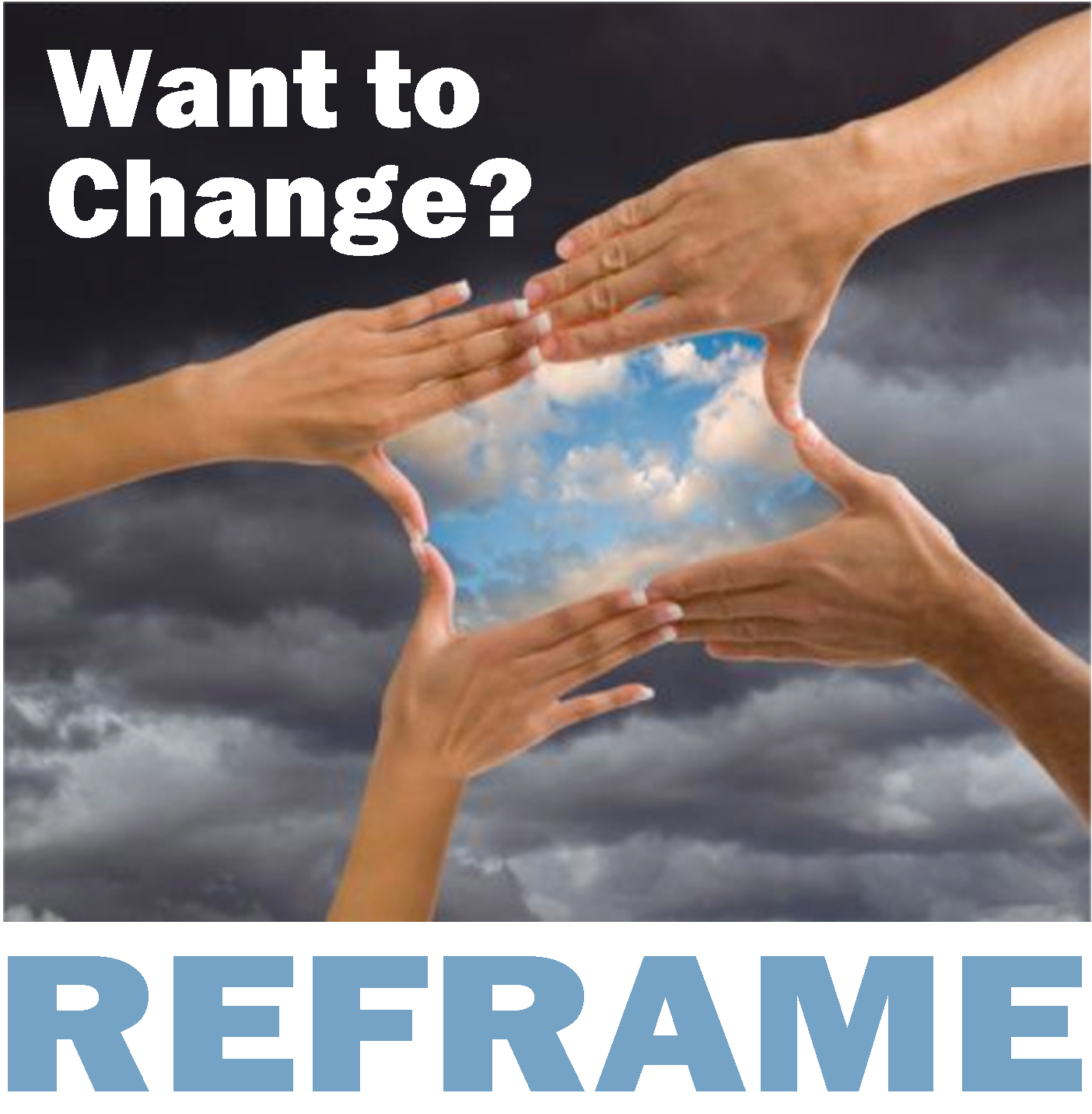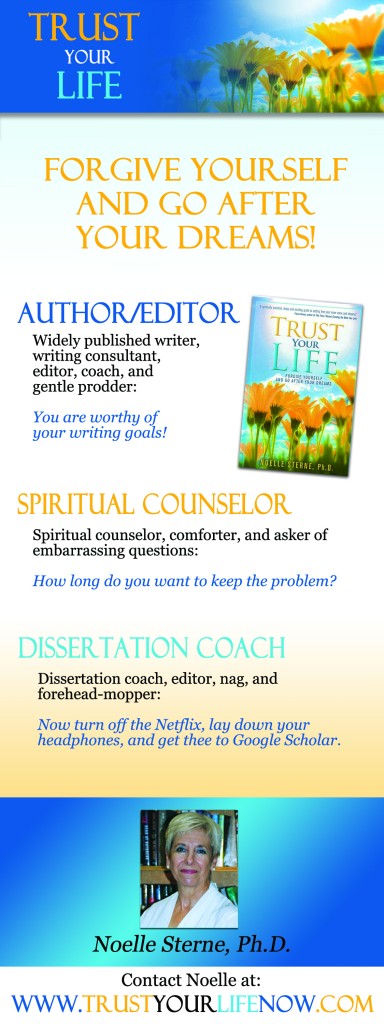By Noelle Sterne
Many wise people have observed how most of us dislike change, even hate and fight against it, and many equally wise people have observed that change must take place. If we want to improve our situations and lives, we must accept change. And, as many other wise people have said, changes in our thoughts precede changes in our experiences.
One of the blocks we have may be around that word change. We worry, “I’m going to be shaken out of my routines, my familiar places and activities, my goals, my expectations.” Seen this way, change feels like being forced to alter our ways of being and beliefs into other shapes, like pulling dried taffy. We feel it’s impossible, we’re too entrenched, we’re really afraid, and so we may give up “trying” to change. But change doesn’t listen. Inevitably, it sweeps over us, sweeps away our fragile sense of security, and gives us miserable life experiences.
We don’t have to succumb to miserable life experiences. We can get the jump on that dread word change. Instead of thinking we must change when something in our lives isn’t working, or we feel swept up in the need to change, we can think of the need as reframing.
What Is Reframing?
Reframing has been with us since people realized they could think. Simply put, it’s seeing and labeling things in another way. Politicians do it all the time (not “go to war” but “deploy”); preachers do it (not “lazy bums” but “our less fortunate brethren”); detectives do it (not a “socially disenfranchised individual” but “the perp”); and parents do it (not “my son is creating great neo-fusion-rock-n-rumble music” in the garage but “a racket and waste of time”).
Here are some ways of thinking about reframing:
- Relabel, restate, reinterpret, recast, reslant, refocus, reformulate, rethink.
- Reconstruct, recreate, reconstitute, remake, redesign.
- Remold, reshape, refashion, rebuild, redirect, reposition.
- Shift, convert, transform, alter attitude and perspective.
We can use these definitions to erase and replace our old damning labels so we can:
- Restore, reinstate, and reconnect with our best selves and highest dreams.
Who Is Reframing?
In many fields people are reframing former precepts, often called paradigm shifts (paradeigma in Greek means pattern or example). Our views of the universe have changed radically based on new discoveries (dark matter, string theory). Our views of the human body have expanded tremendously with alternative and holistic practices and knowledge (yoga for stress, mind-body connection, increasing acceptance of spiritual healing). Personal growth and fitness magazines regularly feature articles to help readers re-view their attitudes (get off the couch, get up once an hour, get off the chips). Author Sharon Boone advises readers to reframe audaciously themselves by turning their “so-called faults into assets” from “procrastinator” to “contemplative,” from “impulsive” to “spontaneous,” from “scatterbrain” to “multitasker,” and from “pessimistic” to “realistic” (“Turn Your Flaws into Advantages,” Mind Body & Spirit Fitness, October 2003, 86-90).
Reframing Our Stories
In counseling and psychology, reframing is often seen in terms of clients’ personal “stories,” their outlooks and perspectives about their lives. Cybil and Steven Wolin, the founders of Project Resilience, an organization dedicated to helping people overcome troubled pasts, make a great observation: “The organizing themes of some people’s stories are constructive . . . other stories are destructive” (“Reframing,” Project Resilience.com. http://projectresilience.com/ framesconcepts.htm, p. 1).
You probably know many people with destructive organizing themes about their lives—they’re the ones who keep you on the phone with a litany of horrible events/circumstances/otherswhodone’emwrong.
Occasionally, though, people surprise us with positive themes. A friend who had recently gotten divorced told me he was quite bitter about the split, in which he lost his
business. He said he was swearing off women, at least for a while. Then, perking up, he said, “I can always make money. Tomorrow I’ll look into some new business possibilities.” He reframed his “loss” into an opportunity.
Unlike my friend, many of us probably hug our destructive stories. I recently heard this one from a 42-year-old man:
I came from a poor family. My parents couldn’t afford to send me to college, so I never got anywhere. I’m not dumb, but I’ll never be anything more than a laborer because I know the world doesn’t recognize someone without a college degree.
Of course, we could list many successful people who had some or no college, followed their dreams, and became very successful: Bill Gates, Michael Dell, Rachel Ray, Halle Berry, Henry Ford, Ted Turner, Pablo Picasso, Eleanor Roosevelt, William Faulkner, Thomas Edison, Walt Disney, Frank Lloyd Wright.
How would reframing help the man whose story I heard? The Project Resilience founders tell us, “Reframing capitalizes on the subjective nature of personal stories to uncover underlying, underemphasized themes in people’s stories that are potentially helpful” (p. 2). So, recall and recount your strengths, triumphs and overcomings. Give yourself credit for them and see yourself in a new light. We need to tell ourselves a new story.
A reframing of the laborer’s story might go like this:
My parents could never send me to college. But I’ve made the most of what I’ve got. People respect me in my job, and I’m very good at it, even if it isn’t in a big office. Why couldn’t I take a few classes at night? I know more about building construction than all those supervisors and engineers I work for. Who knows, I might get a college degree yet.
Wayne Dyer in 10 Secrets for Success and Inner Peace recommends accepting our past,honoring and finally transforming it with “a new job description” (p. 75).
Our experiences are determined by our outlook, mindset, beliefs, and the words we utter about them—our frame. As we reframe our perspective, we will express ourselves differently and experience life differently.
If You’re Fighting Change
With circumstances that have arisen that you feel you cannot change, use the laborer’s new “job description” of his life. Ask yourself a few questions:
What exactly must change?
What can I do to see this change as good?
What great things can I see in this change?
What can I do to anticipate good from this change?
If, for example, you’re facing relationship breakup or divorce, granted it’s hard and it hurts. But you know it’s the right move. To address the first question, what must change could include your living situation and maybe your children’s, your financial picture, possibly your job, your need to explain to family and friends, your self-image. Make a list, especially if you feel overwhelmed. Monumental as some of the items may seem, at least the list is finite.
For the second question, what can you do to see the change as good? Again, reflect on what good can come: a sense of relief and no more fights or frosty silences, a feeling of independence, a chance for adventure and discovery, stimulating challenges, opportunities to do things and go places you didn’t feel you could before because of partner censure or lack of interest or cooperation.
Third, how can you see the change as great? By recognizing all of your responses to the second question and recognizing that you are up to the challenges and growing because of them. (Resilience!) And very possibly, you will gain a renewed reliance on the Source of all for guidance and instructions in the steps to take.
Fourth, you can anticipate good from the change by declaring what you want and imagining the right outcomes. Whatever you assert and believe, life will prove you right. As real as the outward events seem, they don’t make the difference. Our expectations and consciousness do. “Out there” is “in here.”
The profound words of metaphysician James Allen in As a Man Thinketh remain true: Every man is where he is by the law of his being; the thoughts which he has built into his character have brought him there. . . . Good thoughts bear good fruit, bad thoughts bad fruit. The outer world of circumstance shapes itself to the inner world of thought. (pp. 19-21)
Teacher, scientist, and visionary Gregg Braden in The Spontaneous Healing of Belief: Shattering the Paradigm of False Limits puts it concisely: “We’re clearly the architects of our lives” (p. 79). When, as architects, we reframe our mental “house,” we shatter our former sets of hampering beliefs, we almost look forward to the changes, and we make room for the new edifice of better and more satisfying experiences.
Accept the Change and Reframe
The first step in reframing is to notice and admit that you’re stuck. Your habitual outlook and fears are keeping you bound. When you reframe, you see yourself and your circumstances with new eyes, new definitions, and new assumptions, as in your answers to the questions above, even if the results are not in front of you yet. The hoped-for circumstances cannot help but appear as you keep concentrating on your new thoughts. Dyer talks about the shift in terms of intention: “Change the way you look at things, and the things you look at change” (p. 173). A Course in Miracles puts it this way: “From new perception of the world there comes a future very different from the past” (Workbook, p. 447).
This new perception—your determination to reframe—may be the greatest thing you will gain from the change. Fill your mind with the new advantages and focus on them. As you do, you will reframe more easily and become more positive. Instead of fighting against and recoiling from change, you will embrace it and even look forward to it.
Noelle Sterne, author, editor, academician, writing coach, mentor, and spiritual counselor, has published over 300 pieces in print and online venues. These include Author Magazine, Chicken Soup for the Soul, Children’s Book Insider, Fiction Southeast, Funds for Writers, Graduate Schools Magazine, GradShare, InnerSelf, Inspire Me Today, Rate Your Story, Romance Writers Report, Transformation Magazine, Unity Magazine, Women in Higher Education, Women on Writing, The Writer, and Writer’s Digest. A spiritually-oriented chapter appears in Transform Your Life (Transformation Services, 2014). A story appears in Chicken Soup for the Soul: Touched by an Angel (2014), and another will appear in a Tiny Buddha collection (HarperOne, 2015). With a Ph.D. from Columbia University, for 30 years Noelle has assisted doctoral candidates in completing their dissertations (finally). Based on her practice, her handbook for graduate students helps them overcome largely ignored but equally important nonacademic difficulties: Challenge in Writing Your Dissertation: Coping with the Emotional, Interpersonal, and Spiritual Struggles (Rowman & Littlefield Education, September 2015). In Noelle’s book Trust Your Life: Forgive Yourself and Go After Your Dreams (Unity Books, 2011), she draws examples from her academic consulting and other aspects of life to help readers release regrets, relabel their past, and reach their lifelong yearnings. For more about both books and Noelle’s services, seeher website: © 2015 Noelle Sterne www.trustyourlifenow.com.







